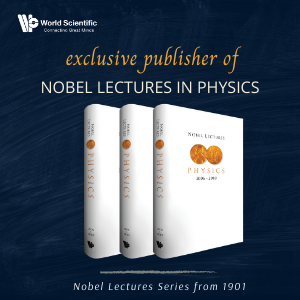System Upgrade on Tue, May 28th, 2024 at 2am (EDT)
Existing users will be able to log into the site and access content. However, E-commerce and registration of new users may not be available for up to 12 hours.For online purchase, please visit us again. Contact us at customercare@wspc.com for any enquiries.
There are reasons to believe the 21st century will be the best ever for astrophysics: the James Webb Space Telescope will extend nearly twenty times the present observational limit of visible light; neutrino massiveness opens a new window for exploration on dark energy and dark matter physics and is expected to provide insights into the fate of the Universe; the Higgs boson may allow for an understanding of the weakness of gravity; gravitational waves produced at the birth of the Universe and by compact stellar objects (supermassive black holes, black hole/neutron star mergers, gamma-ray bursts, white dwarf inspirals) have unveiled a new area of astronomy. Against this background, compact stars, the theme of this volume, present unique astrophysical laboratories for probing the fabric of space-time and the building blocks of matter and their interactions at physical regimes not attainable in terrestrial laboratories.
Sample Chapter(s)
Foreword
Preface
Chapter 1: Birth Events, Masses and the Maximum Mass of Compact Stars
- Birth Events, Masses and the Maximum Mass of Compact Stars (Jorge E Horvath, Livia S Rocha, Antonio L C Bernando, Marcio G B de Avellar and Rodolfo Valentim)
- The Micro-physics of the Quark-nova: Recent Developments (Rachid Ouyed)
- Astrophysics of Super-dense Matter: A Strangeon Conjecture (Chengjun Xia, Xiaoyu Lai and Renxin Xu)
- Fast-spinning and Highly Magnetized White Dwarfs (Edson Otoniel, Jaziel G Coelho, Manuel Malheiro and Fridolin Weber)
- Hyperonization in Compact Stars (Armen Sedrakian, Jia-Jie Li and Fridolin Weber)
- Learning from the Frequency Content of Continuous Gravitational Wave Signals (David Ian Jones)
- Insights Into the Physics of Neutron Star Interiors from Pulsar Glitches (Marco Antonelli, Alessandro Montoli and Pierre M Pizzochero)
- Effects of a Strong Phase Transition on Supernova Explosions, Compact Stars and Their Mergers (Andreas Bauswein, David B Blaschke and Tobias Fischer)




